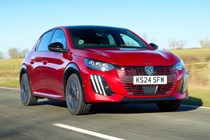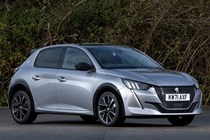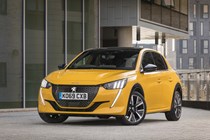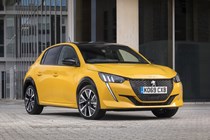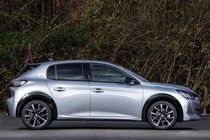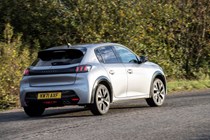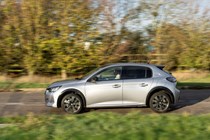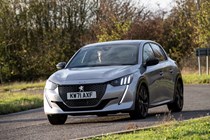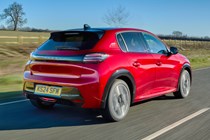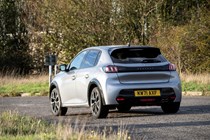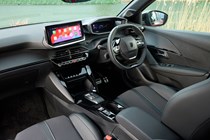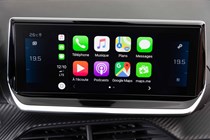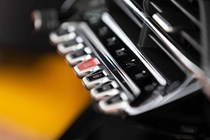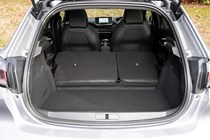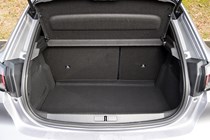
Peugeot 208 engines, drive and performance
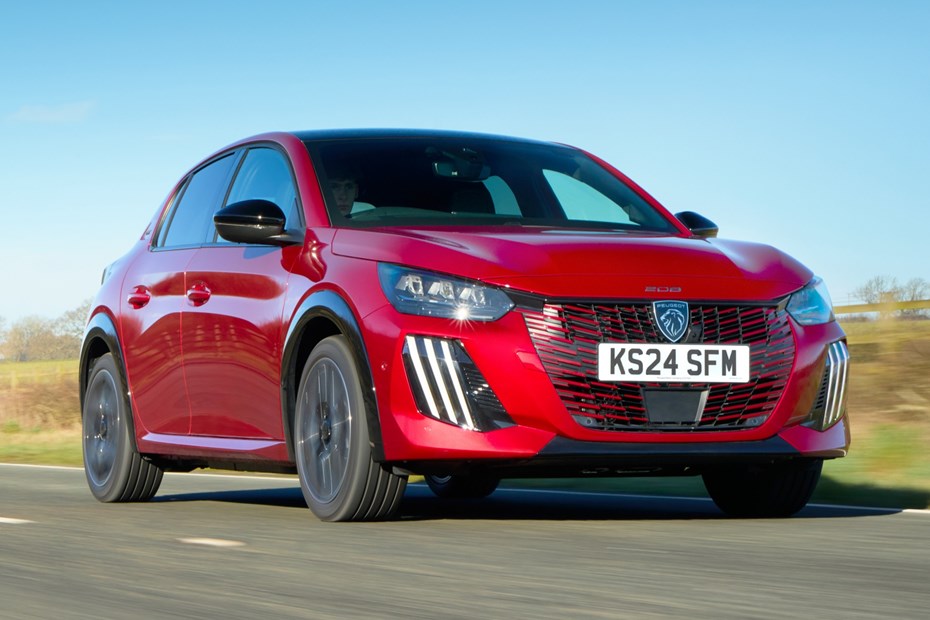
- Three petrol and one hybrid option
- Mixture of manual and auto ‘boxes
- Electric version covered in separate review
Petrol engines
The Peugeot 208 engine line-up includes a single 1.2-litre, three-cylinder engine, available with a choice of three power outputs. There’s also a sole diesel, which is becoming unusual in the supermini class but could prove a good option for those who want to undertake regular long journeys.
The range kicks off with a 75hp petrol engine, which makes do without a turbocharger. It’s pretty lethargic. 0-62mph comes along in 14.9 seconds, but if you’re willing to drive with the throttle mashed into the carpet at all times it proves to be quite a sweet little engine that’s ideal for town use.
However, Peugeot expects – and we recommend – that most buyers will opt for the 100hp version instead. It’s turbocharged for extra grunt, and it’s the sweet spot in the range. It’s peppy around town and totally at ease on faster roads. The hottest version has 130hp and it feels very sprightly indeed. It can be great fun to drive, but you don’t really need the extra power.
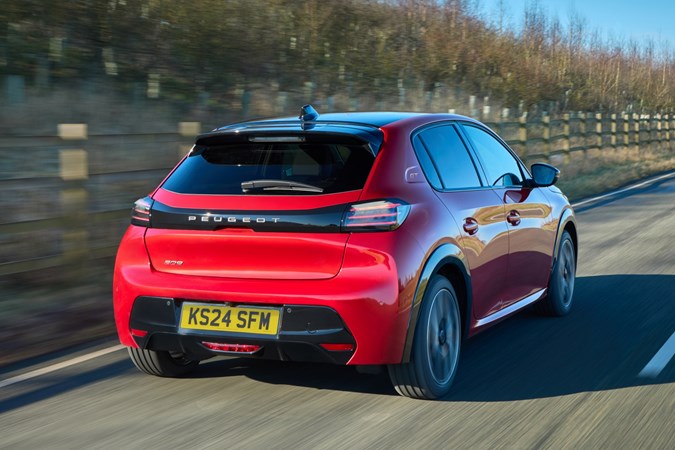
The 75hp engine comes paired to a five-speed manual gearbox, which has a rather long throw but is quite nice to operate. There’s a six-speed manual for the 100hp model, which is better to use but does suffer with a rather awkwardly-shaped knob.
Available as an option for 100hp models and as standard on 130hp models is an eight-speed automatic. We think it’s the best self-shifter in the supermini market. It’s got more ratios than any of its competitors, yet rarely feels like it’s struggling to make a decision. It keeps the engine responsive at low speeds and really relaxed when you’re moving faster, thanks to its very high top gear – at motorway speeds, it’s barely ticking over at 2,000rpm.
Diesel engines
You could get a four-cylinder, 1.5-litre diesel with 130hp and 250Nm of torque. This was available only with the six-speed manual gearbox and took 10.2 seconds to go from 0-62mph, but was discontinued due to slow sales.
Electric and hybrid engines
Peugeot released a hybrid version of the 208 with the 2023 facelift. Available with either 100hp or 136hp, a small battery under the front passenger seat allows the engine to turn off for longer when you’re stationary or slowing down. It can also power the car on electricity alone for short distances, improving fuel economy and reducing emissions.
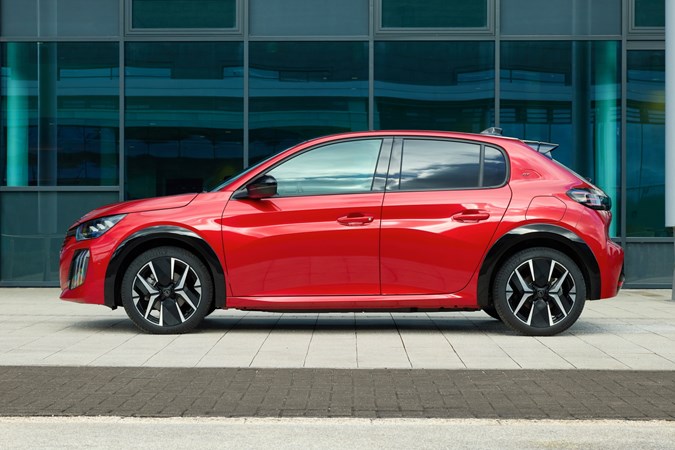
It’s fine when you’re on the open road, although the system can be rather clunky around town. Switches from EV running to petrol aren’t particularly smooth and neither are some gearchanges. There’s also no control of the regenerative braking that’s used to charge the battery, so sometimes you slow quicker than you’d expect when you just come off the throttle. Given it’s a lot more to buy than a regular petrol and only about 5mpg better in the real world, we wouldn’t bother.
What’s it like to drive?
- Light, easy steering
- Roly-poly handling with standard chassis
- Still fun to drive in most configurations
The 208’s tiny steering wheel means it feels impressively darty and responsive at lower speeds – this is a superb car to nip about town in. It’s good on faster roads, too, though on the motorway the steering assistance can feel a little inconsistent leading to an over-light, floaty sensation. Cars with the Sport driving mode benefit from heavier steering, which improves this enormously. If you want driving thrills, we’d point you towards the Suzuki Swift.
There’s plenty of body roll on cars with the standard chassis thanks to a softly sprung set up. It feels more pronounced from the passenger seat and a nose-dive can be easily provoked by braking. The diesel-engined 208 seems to suffer from an even greater lack of composure, especially when driven quickly or over broken tarmac.

Ride comfort in the Peugeot 208 is somewhat of a mixed bag. Stick to a lesser trim with small wheels and all is well. Switch to a GT on bigger wheels and it can be a bit firm. That said, it’s a comfier choice than the Vauxhall Corsa,
Top spec cars feel quite nice at speed and over smaller tarmac defects, but quickly becomes a bit lumpy over bigger bumps. Elsewhere though the 208 is quite refined, with quiet engines putting out little noise while there’s a huge amount of seat adjustment in the front.


